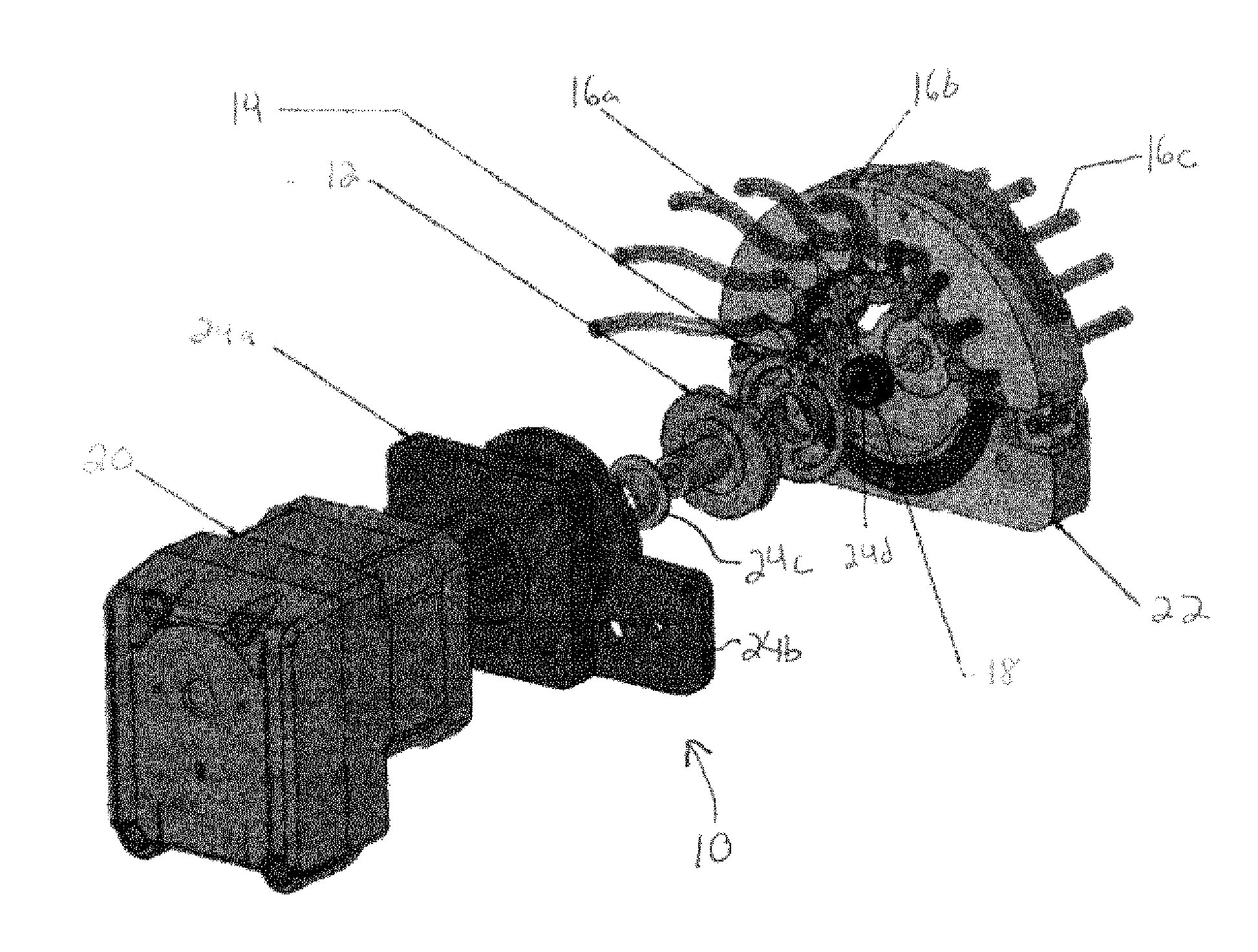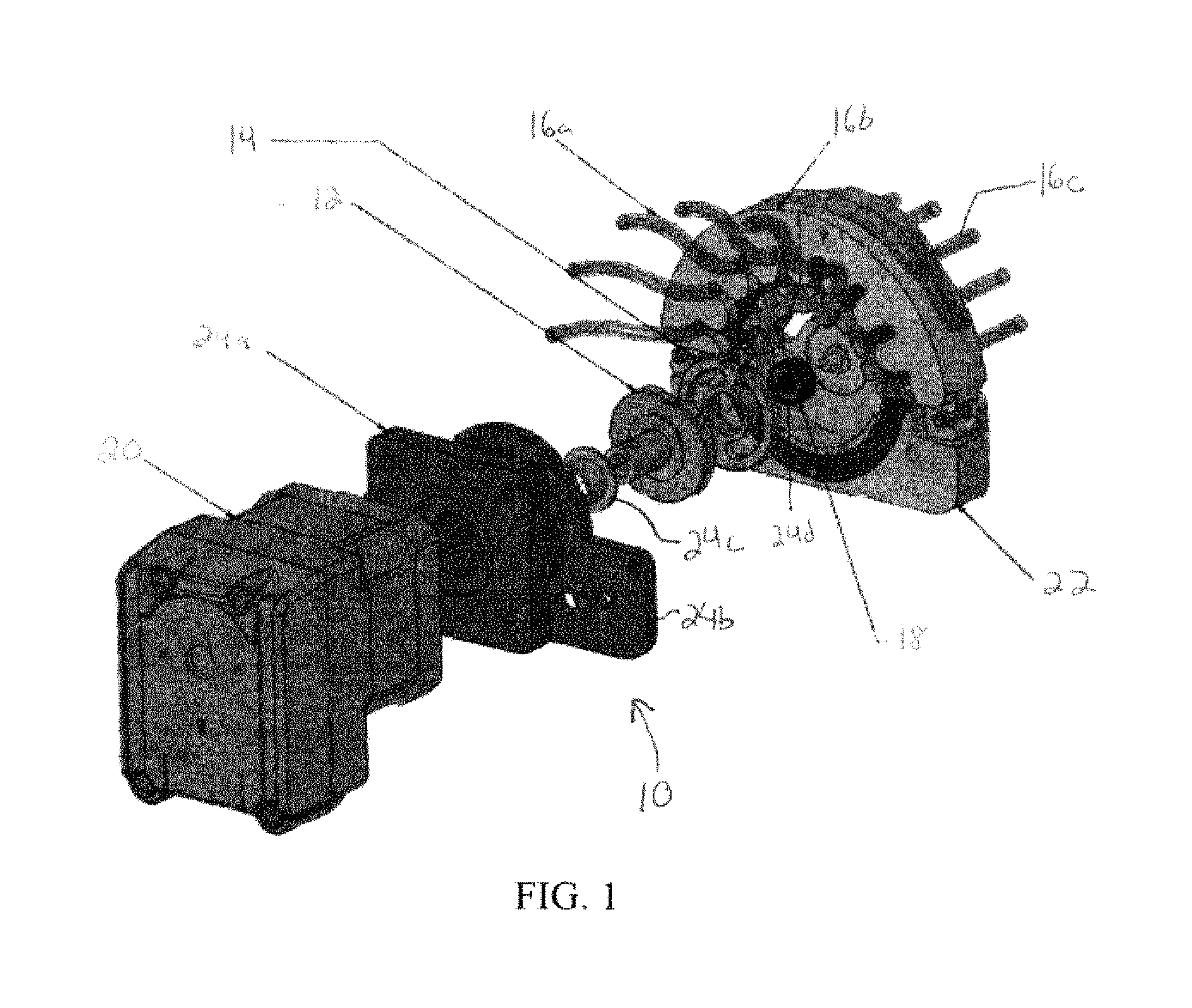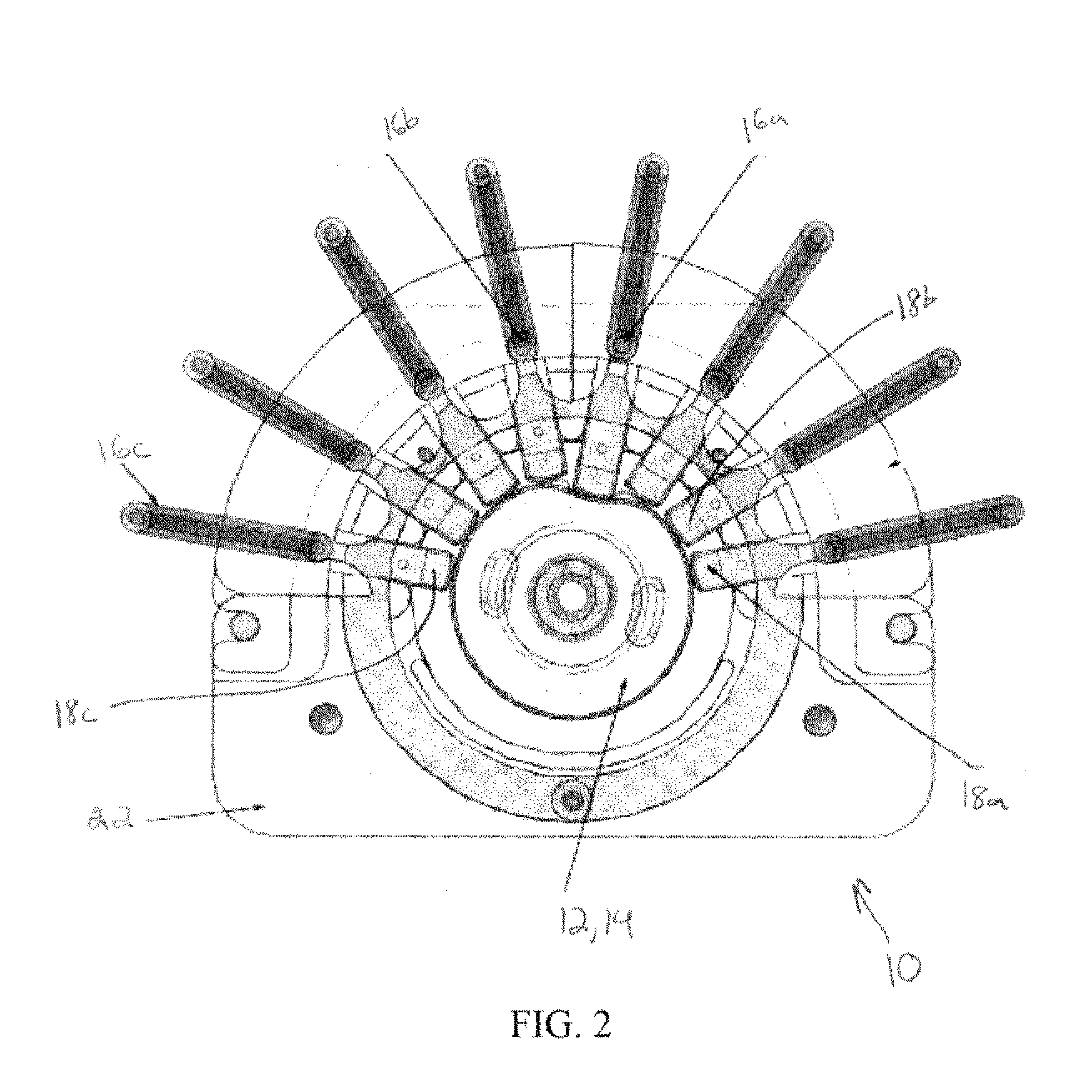Pinch manifold
a technology of non-contact fluid and manifold, which is applied in the direction of diaphragm valves, instruments, engine diaphragms, etc., can solve the problems of unreliable operation and automation control of solenoid pinch valves, corroding effects on machine parts, and minimally-interactive devices
- Summary
- Abstract
- Description
- Claims
- Application Information
AI Technical Summary
Benefits of technology
Problems solved by technology
Method used
Image
Examples
Embodiment Construction
[0022]The present invention advantageously provides a substance delivery control system that is scalable, cost-effective, reduces the complexities and numbers of components, is not susceptible to failures from power interruption, and further reduces the amount of electrical power required for operation. Now referring to the figures, there is shown in FIGS. 1-3 an embodiment of a substance delivery control system 10 constructed in accordance with the principles of the present invention. In particular, the substance delivery control system 10 may generally include a plurality of delivery control elements, such as a first delivery control element 12 and a second delivery control element 14, movable with respect to one another to open, close, or otherwise affect one or more conduits 16 and thus the flow or movement of a substance therethrough. The system may also include one or more compression elements 18 interacting with the delivery control elements to compress or otherwise engage th...
PUM
 Login to View More
Login to View More Abstract
Description
Claims
Application Information
 Login to View More
Login to View More - R&D
- Intellectual Property
- Life Sciences
- Materials
- Tech Scout
- Unparalleled Data Quality
- Higher Quality Content
- 60% Fewer Hallucinations
Browse by: Latest US Patents, China's latest patents, Technical Efficacy Thesaurus, Application Domain, Technology Topic, Popular Technical Reports.
© 2025 PatSnap. All rights reserved.Legal|Privacy policy|Modern Slavery Act Transparency Statement|Sitemap|About US| Contact US: help@patsnap.com



